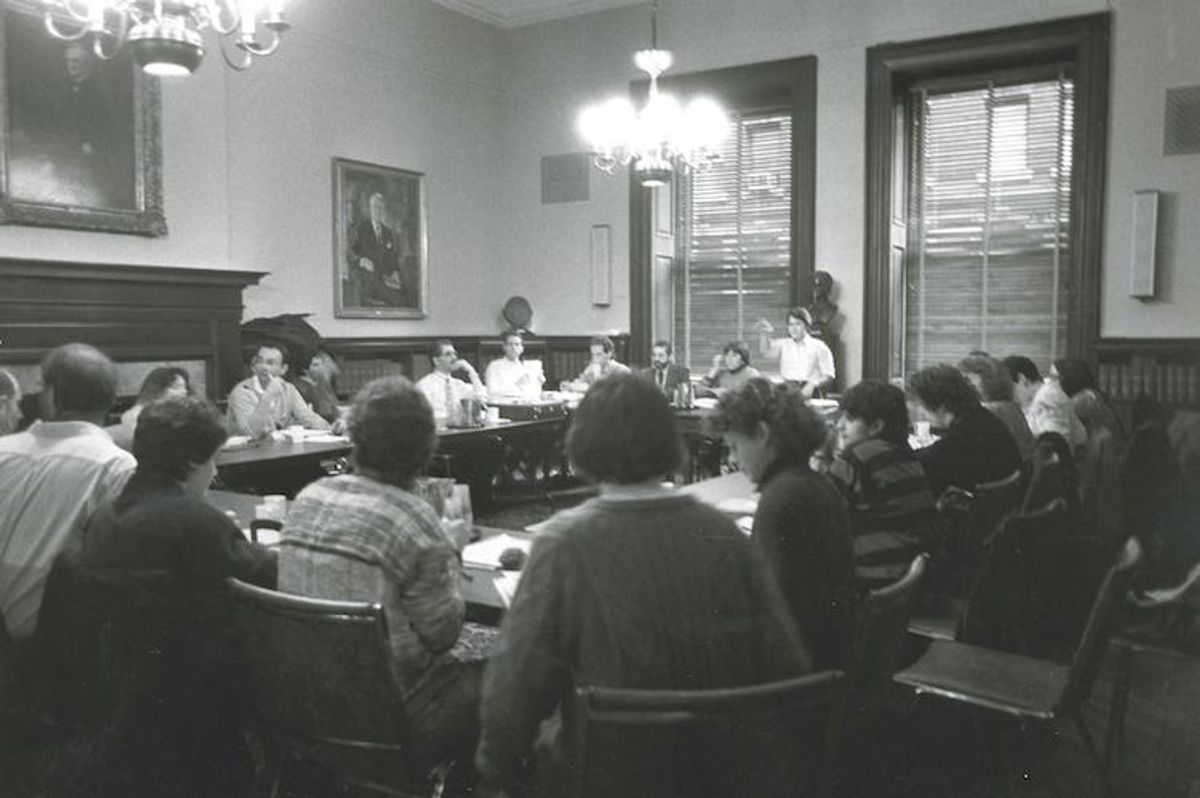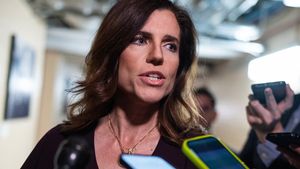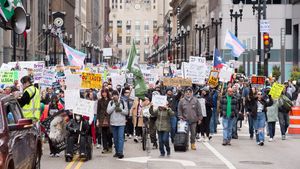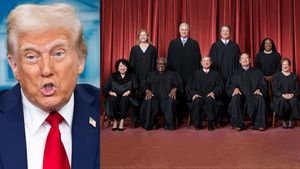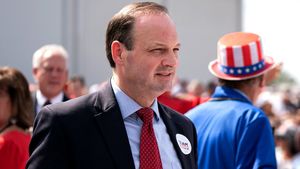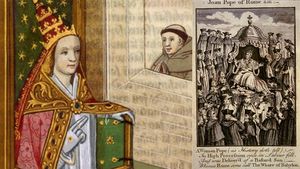December, 1987 roundtable held at the Association of the Bar of NYC. Photo courtesy of Lambda Legal.
"The Sodomy Roundtable" is an excerpt from the new book, Love Unites Us: Winning the Freedom to Marry in America.
It is difficult to overstate the harms done to gay and lesbian people by sodomy laws. Until 1961, every state in the United States had sodomy laws on the books. Arrests and prosecutions of gay men were common. In many places, police entrapment of gay men was rampant, and the reach of the laws went even further, associating all lesbians and gay men with criminal sexual activity. All too often police officers, judges, and other people involved in the criminal justice system targeted and harassed gay men, lesbians, bisexual, and transgender people even though they had never been arrested nor convicted of any crime. Sodomy laws were also used to justify other forms of discrimination, including employment and custody and visitation rights.
In 1955 the American Law Institute, an independent organization devoted to studying and improving the law, proposed a Model Penal Code that did not include sodomy laws; when Illinois adopted the model code in 1961, it became the first state in the country to decriminalize sodomy. Legal challenges to sodomy laws were brought in the 1950s and 1960s, generally by desperate men facing criminal charges, but none succeeded. In 1971, as the women's and reproductive rights movements changed laws and attitudes about sexuality and the lesbian and gay rights movement began to grow, Connecticut became the second state in the country to decriminalize consensual sex between same-sex partners, followed by another eighteen states by the end of that decade. The reach of sodomy laws was still so great, however, that many courts and members of the public continued to consider all lesbians and gay men as criminals.
As the pace of legislative repeal began to slow, civil rights lawyers were on the lookout for cases in which they could bring constitutional challenges to sodomy laws, hoping for the U.S. Supreme Court to strike down the laws in all states. In 1982, the American Civil Liberties Union (ACLU) of Georgia found such a case: Michael Hardwick, a gay man living in Atlanta, had been arrested in his own home for private, consensual, non-commercial adult sexual activity; he was willing to fight back. Even though, after his arrest, the local district attorney declined to prosecute the case, Hardwick went to court to argue that the law had unfairly targeted him as a gay man. As this challenge began in federal court, it became clear to Abby Rubenfeld, then-legal director of Lambda Legal, that the organizations fighting sodomy laws needed to coordinate their efforts. She called a meeting, hosted by Lambda Legal and the ACLU in late 1983, that led to the formation of what was then called the Ad Hoc Sodomy Law Task Force. Among its purposes were to coordinate, to plan strategy, and to work out difficult questions about the risks of trying to get a case to the Supreme Court. Once Michael Hardwick's case was on its way to the Court in 1986, the Ad Hoc Task Force also worked to create amicus support.
The well-known Harvard law professor and civil rights lawyer Laurence Tribe argued the case on behalf of Hardwick before the Supreme Court. De- spite the courage of Hardwick and the efforts of the LGBT and other civil rights advocates, the Supreme Court upheld sodomy laws by a 5 - 4 vote. The tone of the majority opinion and concurrence were ugly and dismissive. Writing for the majority, Justice Byron White declared:
The issue presented is whether the Federal Constitution confers a fundamental right upon homosexuals to engage in sodomy, and hence invalidates the laws of the many States that still make such conduct illegal, and have done so for a very long time. . . . Proscriptions against that conduct have ancient roots. . . . Against this back- ground, to claim that a right to engage in such conduct is "deeply rooted in this Nation's history and tradition" or "implicit in the concept of ordered liberty" is, at best, facetious.
After leaving the Court, Justice Powell later told an audience of students at New York University Law School that he probably made a mistake with his vote, but went on to call the case frivolous. What could have been a one-vote victory became a one-vote loss.
The Supreme Court decision was a terrible blow to the movement. The Court had made it clear that it did not see gay people as worthy of constitutional protections. Coming as it did in the early years of the AIDS epidemic, it provoked fear of renewed antigay legislation, including the risk of recriminalization of sodomy in the twenty-four states that no longer had such laws on the books. Thankfully, this did not come to pass--no state recriminalized sodomy, and while public reaction to the Supreme Court's decision was mixed, many editorial writers and political cartoonists took the Court to task for its interference in people's private lives. Still, the combination of the disdain of the Court and the growth of the AIDS epidemic also led to significant increases in support for lesbian and gay civil rights organizations, which, in turn, enabled growth in the work of Lambda Legal and other groups. Both litigation, now under state constitutions, and legislative work against sodomy laws continued, and there was a steady chipping away at the number of states with sodomy laws on the books.
The Ad Hoc Sodomy Law Task Force continued to meet, gradually expand- ing its focus to include other antigay legal issues, including family law, HIV, employment, and, in time, transgender issues, while keeping sodomy law reform in the mix. The four main lesbian and gay legal organizations--Lambda Legal; Gay & Lesbian Advocates & Defenders (GLAD); The National Center for Lesbian Rights (NCLR), which had earlier been called the Lesbian Rights Project; and the ACLU, which in 1986 created its Lesbian and Gay Rights Project--were now meeting together, generally twice a year. They shared their thinking, coordinated strategy, and sometimes divided up cases on which to focus. This work created a much stronger legal movement, as the Ad Hoc Task Force evolved into the LGBT Litigators' Roundtable.
As a participant in these meetings since 1984, first as a representative of GLAD and later of Lambda Legal, I saw first-hand the positive impacts of getting people from organizations that were both collegial and competitive to talk to each other regularly, work together, and get to know one another, and I often wished we could have created a similar roundtable for the LGBT organizations that focus on legislative or political advocacy. I won't say there weren't disagreements-- and sometimes strong ones on everything from legal theories to case selection to geography to media positioning--but people behave better with people they know. Often when people have to sit across the table on a regular basis, they come to like and respect one another.
These meetings have grown from a few people from a handful of organizations to now about a hundred invitees from close to two dozen groups--the core litigation groups named above plus legal staff from a much broader range of LGBT groups. The Roundtable, as it is generally known, was a key forum be- ginning in the early 1990s for discussion, arguments, and planning around marriage litigation. It is impossible to imagine all the progress the litigation groups have achieved without the Roundtable as a key and central forum.
Meanwhile, through the late 1980s and 1990s, these groups continued to spearhead litigation against sodomy laws, while political efforts to repeal the laws continued as well. By 2003, when Lawrence v. Texas went to the Supreme Court, only seventeen years after the decision in Bowers v. Hardwick, LGBT activists and our allies had cut the number of states with sodomy laws on the books from twenty-six to thirteen. When I say "only seventeen years," I do not make light of the tremendous harm that sodomy laws continued to do in that period, but it was unusual, in Supreme Court time, for the Court to revisit an issue and reverse itself in less than two decades. Moving from a bare majority of states to a minority with such laws on the books was critical to the success of Lawrence. Winning Lawrence, in turn, was critical to the success of every marriage equality case that followed. A persistent, coordinated campaign of public education and impact litigation had set the stage for the next big steps forward.
Purchase Love Unites Us: Winning the Freedom to Marry in America here.
